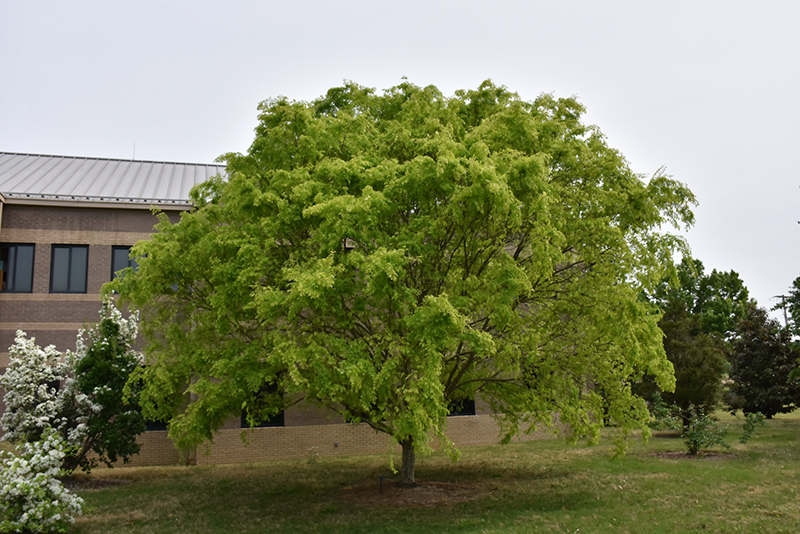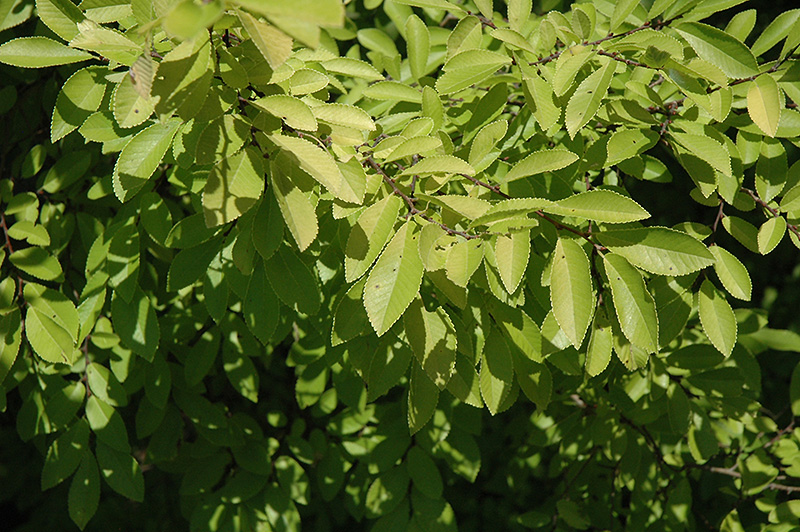>> Home
Golden Rey Elm
Ulmus parvifolia 'Golden Rey'
Height: 60 feet
Spread: 50 feet
Sunlight:
![]()
Hardiness Zone: 4
Other Names: Chinese Elm, Lacebark Elm
Description:
A stunning shade tree with an upright spreading form with excellent branching structure; bright yellow new foliage matures to gold and light green, then back to yellow in fall; flaking bark is interesting; resistant to disease and unaffected by insects
Ornamental Features
Golden Rey Elm has gold deciduous foliage which emerges yellow in spring on a tree with an upright spreading habit of growth. The small glossy pointy leaves turn an outstanding yellow in the fall. The mottled dark gray bark adds an interesting dimension to the landscape.
Landscape Attributes
Golden Rey Elm is a deciduous tree with an upright spreading habit of growth. Its relatively fine texture sets it apart from other landscape plants with less refined foliage.
This is a relatively low maintenance tree, and is best pruned in late winter once the threat of extreme cold has passed. It has no significant negative characteristics.
Golden Rey Elm is recommended for the following landscape applications;
- Shade
Planting & Growing
Golden Rey Elm will grow to be about 60 feet tall at maturity, with a spread of 50 feet. It has a high canopy with a typical clearance of 7 feet from the ground, and should not be planted underneath power lines. As it matures, the lower branches of this tree can be strategically removed to create a high enough canopy to support unobstructed human traffic underneath. It grows at a fast rate, and under ideal conditions can be expected to live for 70 years or more.
This tree should only be grown in full sunlight. It is very adaptable to both dry and moist locations, and should do just fine under average home landscape conditions. It may require supplemental watering during periods of drought or extended heat. It is not particular as to soil type or pH, and is able to handle environmental salt. It is highly tolerant of urban pollution and will even thrive in inner city environments. This is a selected variety of a species not originally from North America.

